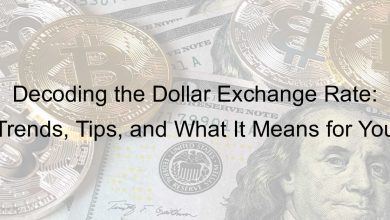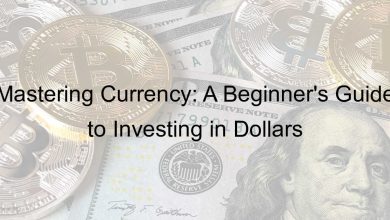Decoding the Dollar: How It Shapes Global Economies and Your Wallet

In today’s interconnected world, the impact of the dollar extends far beyond the borders of the United States. It influences global markets, trade agreements, and even individual purchasing power. Understanding how the dollar shapes economies can empower consumers to make informed financial decisions. As we decode its complexities, we’ll explore the role this currency plays in your wallet and how it affects everyday life, from your grocery bill to international travel costs. Join us on this journey to unveil the many layers of the dollar and its significant influence on our world.

The Historical Evolution of the Dollar: From Gold Standard to Fiat Currency
The dollar has undergone a remarkable transformation throughout history, transitioning from a commodity-based currency to a flexible fiat system. Initially, its value was anchored to precious metals, primarily gold, offering a sense of stability and trust. This was particularly crucial during times of economic uncertainty, providing individuals with a tangible asset behind their money.
However, the limitations of the gold standard became clear. The discovery of new gold deposits and the need for economic growth outpaced gold’s availability. Consequently, countries began to shift towards fiat currencies, which derive their value from government regulation rather than physical commodities.
- World War I Impact: The war prompted many nations to abandon the gold standard to finance military efforts, leading to inflation and currency fluctuations.
- Great Depression: In response to economic turmoil, the U.S. eventually moved away from gold to provide more monetary flexibility, impacting global economies.
- Modern Era: Today, fiat currencies dominate the financial landscape, allowing governments to manage economies more dynamically through monetary policy.
In summary, the evolution from gold to fiat currency illustrates a broader shift in economic philosophy, reflecting changing needs and the complexities of the modern financial world.

Understanding the Dollar’s Role in International Trade and Investment
The U.S. dollar serves as the primary currency for global trade and investment, but its significance extends beyond mere transactions. Businesses and nations rely on the dollar not only to facilitate trade but also to establish economic stability. It is widely accepted and trusted, which creates a sort of confidence among traders and investors alike.
However, the reliance on the dollar introduces certain complexities. For instance, fluctuations in its value can impact global markets dramatically. Countries engaging in trade must consider exchange rates, leading to a mix of opportunities and risks. They might face increased costs or unexpected gains, which often create perplexing scenarios. Additionally, while some nations advocate for alternatives to the dollar, such discussions rarely materialize into substantial shifts.
The Dollar’s Predominance
Another aspect to consider is the role of the dollar in international loans and investments. Many countries borrow in dollars, making them vulnerable to U.S. monetary policies. In this intricate web, decisions made in Washington can ripple across the globe, affecting economies far removed from its shores. Hence, comprehending the dollar’s multifaceted role becomes essential for any stakeholder in the international market.
How Currency Exchange Rates Impact Your Purchasing Power and Savings
Currency exchange rates play a crucial role in shaping your purchasing power and savings. When you travel or shop online from overseas, the fluctuations in these rates can significantly alter the final cost of your purchases. For instance, if the local currency weakens against your home currency, you might find yourself spending less, while a stronger foreign currency can lead to surprising expenses.
The Ripple Effect
This is not just about immediate transactions; it’s also about long-term financial planning. A volatile exchange rate can impact your savings, especially if you hold foreign assets or plan to invest internationally. A sudden drop in value can diminish your savings’ worth when converted back to your local currency. Thus, understanding these movements becomes essential.
However, the complexity of these rates can be baffling. Factors such as inflation, economic stability, and market sentiment create a tangled web that influences exchange rates. So, while you may feel like an expert in your financial dealings, remember that external economic forces can develop unexpected challenges. Keeping an eye on these rates can empower you to make informed decisions and protect your savings.
The Influence of U.S. Monetary Policy on Global Financial Stability
U.S. monetary policy plays a pivotal role in shaping the financial landscape not just domestically, but globally. The decisions made by the Federal Reserve ripple across borders, affecting economies in diverse ways. For instance, when interest rates are adjusted, capital flows can shift dramatically, influencing investment choices worldwide.
Furthermore, the relationship between U.S. monetary policy and global markets can be rather perplexing. Many emerging markets depend heavily on U.S. capital. When the Fed tightens its monetary policy, these nations often face capital outflows, which can destabilize their financial systems. This stark reality raises crucial questions about reliance on foreign investments.
- Interest Rates: Changes in U.S. interest rates can dictate global borrowing costs.
- Exchange Rates: Fluctuations in the dollar’s value can impact import and export dynamics.
- Investor Sentiment: U.S. policy announcements can sway global market confidence.
In conclusion, the interconnectedness of the global economy means that U.S. monetary policy will continue to exert profound influence, creating both opportunities and challenges for countries worldwide.
Decoding Dollarization: How Other Nations Adopt the U.S. Currency
Dollarization refers to the process by which countries adopt the U.S. dollar as their official currency or as a prevailing medium of exchange. This phenomenon occurs for various reasons. Notably, some nations seek to stabilize their economies amidst rampant inflation or currency devaluation. For instance, countries like Ecuador and El Salvador have turned to the dollar, aiming to gain credibility and attract foreign investments.
However, the implications of dollarization are complex. While it can bring the benefit of reducing transaction costs and enhancing trade, it often means relinquishing control over monetary policy. This situation poses challenges, particularly when local economies face unique issues that a one-size-fits-all currency cannot address. Critics argue that relying on the dollar may make countries vulnerable to economic shifts in the United States.
Economic Consequences
Moreover, the societal impact of dollarization is significant. It can affect everything from prices to job markets. Many argue that the initial relief can lead to long-term dependency, where local businesses struggle to adapt. Ultimately, dollarization can serve as a double-edged sword, opening doors but also raising critical questions about sovereignty and economic health.
The Dollar’s Dominance in the Digital Age: Cryptocurrencies vs. Traditional Currency
In today’s ever-evolving financial landscape, the US Dollar maintains its stronghold as the primary global reserve currency. This supremacy faces significant challenges from the rise of cryptocurrencies, which promise a decentralized and borderless alternative. While many enthusiasts hail digital currencies as the future, they also present a complex array of dilemmas.
Cryptocurrencies: The Flexible Front-Runners
Cryptocurrencies like Bitcoin and Ethereum offer unique benefits, including enhanced security and reduced transaction costs. However, their value can fluctuate wildly, creating uncertainty. Such volatility raises questions. For instance, can these digital assets truly compete with the stability of the dollar in the long term?
Moreover, the regulatory environment surrounding cryptocurrencies is still developing. Governments struggle to adapt, which adds another layer of confusion. Will they embrace this shift or attempt to stifle it? It’s a delicate balance, given that many see digital currencies as a threat to established financial systems.
Ultimately, the future of money may lie in a synthesis of both worlds. While the dollar remains a bastion of stability, the allure of cryptocurrency can’t be ignored. This dynamic interplay captures the essence of a rapidly changing economic environment.
Strategies for Individuals: Leveraging the Dollar’s Strength to Enhance Personal Finance
In a world where financial stability is often elusive, taking advantage of the dollar’s current strength can be a lifeline for individuals seeking to enhance their personal finance. The brilliance of this strategy lies in its simplicity, yet its execution can sometimes confuse. Here are several actionable steps to consider:
- Invest Wisely: Allocate funds in USD-denominated assets. This provides a buffer against inflation and currency fluctuations.
- Shop Smart: With a strong dollar, consider importing goods or making purchases online from international retailers. This can help you stretch your budget.
- Evaluate Travel Options: A robust dollar means that traveling abroad may be more affordable. Look for destinations where your dollar will go further.
However, it’s also essential to stay informed. Currency markets can be unpredictable, and what works today may not hold tomorrow. For instance, strength in one currency often signals weakness in another, creating a delicate balance.
Ultimately, taking these steps can enhance your financial wellbeing. Yet, one must remain vigilant, as financial landscapes can shift unexpectedly. Adapting to these changes is key.




